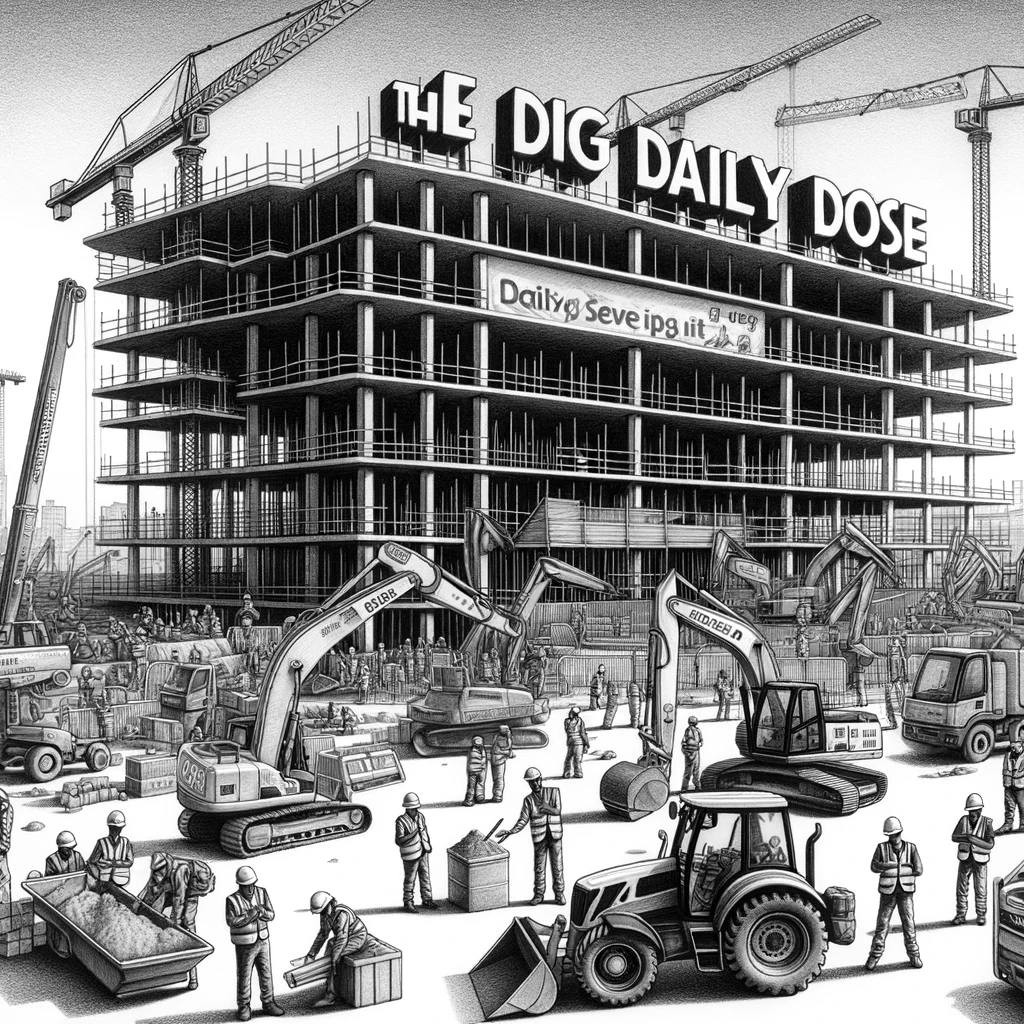Daily Doser - {{First & Last Name}} {{Company}}
"Peace cannot be kept by force; it can only be achieved by understanding."
- Albert Einstein
THE ART OF LEADERSHIP
Cultivating Inner Peace: A Path to Tranquility
Albert Einstein, a luminary in the world of science, provides a profound insight into the concept of peace, extending far beyond the realms of physics into the intricate dynamics of human relationships and inner tranquility. His words illuminate the path to true peace, emphasizing understanding over coercion.
The Illusion of Forced Peace
Einstein's observation challenges the notion that peace can be imposed through force. It underscores the idea that genuine peace is not a state of mere absence of conflict, but a positive presence of understanding and harmony. This perspective shifts the focus from external control to internal resolution and empathy.
Understanding as the Foundation of Harmony
The key to peace, according to Einstein, lies in understanding — understanding ourselves, others, and the world around us. This requires open-mindedness, patience, and the willingness to listen and empathize. It's a journey that begins within and extends outward, influencing our interactions and relationships.
Cultivating Empathy and Openness
Embracing Einstein's philosophy involves cultivating empathy and openness in our daily lives. It's about seeking to understand different viewpoints, experiences, and emotions. By doing so, we not only foster peace with others but also nurture inner peace, leading to a more balanced and fulfilling life.
Inner Peace: A Personal Responsibility
Einstein’s quote also implies that inner peace is a personal responsibility. It's not something that can be given or imposed; it must be actively pursued and maintained through self-awareness and emotional intelligence. This pursuit is a continuous process of learning, adjusting, and growing.
Conclusion: The Journey Toward Understanding and Peace
Albert Einstein's wisdom transcends his scientific achievements, offering a timeless lesson in the pursuit of peace. His words remind us that the path to lasting tranquility and harmony lies in the pursuit of understanding and empathy. As we embrace this journey, we not only contribute to a more peaceful world but also discover a deeper sense of calm and contentment within ourselves. Here's to fostering understanding and cultivating peace in every aspect of our lives.
COMMERCIAL CONSTRUCTION
U.S. Commercial Construction: Embracing Digital Project Management for Enhanced Efficiency
Adopting Digital Tools: A Step Towards Modernization
The U.S. commercial construction industry is taking significant strides in modernizing its project management processes. A recent study highlights a growing trend towards the adoption of digital project management systems, emphasizing their benefits in enhancing the efficiency and outcomes of construction projects. These systems, integrating advanced technology such as artificial intelligence (AI) and automated data tools, are revolutionizing how contractors plan, execute, and monitor construction activities.
Impact of Digitalization on Project Management
The shift towards digital project management is proving to be a game-changer in the construction sector. These systems allow for better coordination, real-time tracking of progress, and more accurate forecasting. The integration of AI and automation further enhances the decision-making process, reducing errors and increasing the precision of project outcomes. This digital transformation is not only improving project execution but also leading to significant cost savings and time efficiencies.
Future Prospects and Industry Adaptation
As the industry continues to embrace these technological advancements, the future looks promising for U.S. commercial construction. The adoption of digital project management tools is expected to grow, paving the way for more sophisticated and efficient construction processes. This evolution is a key indicator of the industry's commitment to innovation and continuous improvement, setting a new standard for construction project management globally.
In conclusion, the U.S. commercial construction industry's move towards digital project management signifies a pivotal shift in its approach to construction processes. This digital adoption is enhancing efficiency, accuracy, and overall project success, marking a new era in the industry's evolution.
Be Useful by Arnold Schwarzenegger is a memoir emphasizing the importance of finding purpose and serving others to live a fulfilling life. It offers practical advice on setting goals, taking risks, and making a positive impact on the world.
INFRASTRUCTURE INDUSTRY
The Evolving Landscape of U.S. Infrastructure: A Focus on Sustainable Practices and Renewables
As 2023 draws to a close, the U.S. infrastructure industry reflects a trend toward sustainable practices and a notable shift in investment toward renewable energy.
Sustainable Infrastructure Standard The American Society of Civil Engineers (ASCE) released a significant new standard in October 2023, titled "ASCE/COS 73-23: Standard Practice for Sustainable Infrastructure." This standard provides comprehensive guidance for infrastructure owners to develop and implement sustainable solutions throughout a project's entire lifecycle. It encompasses a wide range of civil infrastructure, including transportation projects, water systems, and the energy grid. This standard, developed over five years with input from diverse stakeholders, marks a transformational step towards embedding sustainability and long-term reliability in infrastructure projects.
Renewables: A Dominant Sector The renewables sector has shown remarkable resilience and growth in 2023. It was the only sector to register year-on-year deal growth in the first nine months of the year, accounting for 37% of private infrastructure investment market share. This surge is in line with the global push towards decarbonization, with renewable energy investment reaching a record high of $358 billion in the first half of 2023. The Inflation Reduction Act has been a significant catalyst in this trend, attracting substantial capital flows into U.S. utility-scale clean energy projects. This legislation has positioned the U.S. as a leading hub for clean energy deals, surpassing Europe in renewables investment.
Electric Vehicle Infrastructure The electric vehicle (EV) sector is also gaining momentum, particularly with the support of the Inflation Reduction Act. EVs are expected to become a major beneficiary of this act, with sales and infrastructure development receiving significant boosts. However, the EV sector still faces challenges, including supply chain issues and the need for increased investment in charging infrastructure.
The Road Ahead As the U.S. infrastructure industry moves into 2024 and beyond, the focus on sustainable and renewable energy sources is expected to continue growing. These sectors are not only crucial for meeting environmental and climate goals but are also becoming increasingly viable from an investment perspective. However, challenges such as financing, supply chain disruptions, and the need for more supportive policies remain.
The ongoing developments in sustainable infrastructure and renewable energy are integral to the future of the U.S. infrastructure landscape, promising a more resilient and environmentally conscious approach to development.
"Tuesday Unveilings: Discover The Dig's Latest Insights and Stories" thedigdailydose.beehiiv.com/p/dig-daily-do… via @TheDigDailyDose
— #⚒️ The Dig Daily Dose (#@TheDigDailyDose)
1:44 PM • Jan 2, 2024
RESIDENTIAL RESEARCH
U.S. Residential Business Insight: A Mixed Landscape in Housing and Construction
Resilience in the Face of Economic Challenges
The U.S. residential business, amidst economic fluctuations, has shown resilience and adaptation. According to CBRE's 2023 U.S. Real Estate Market Outlook Midyear Review, the expected recession has been pushed to late 2023 into early 2024. This adjustment has led to a shift in the forecast for recovery in commercial real estate investment volume and stabilization in cap rates into 2024. Despite a downturn in investment volume predicted for 2023, a rise is anticipated in 2024, as the economy stabilizes and adjusts to the new interest rate environment.
Florida’s Housing Market Defying Trends
In a contrasting trend, Redfin reports that Florida's housing market has demonstrated remarkable resilience, with Miami experiencing a 19.7% year-over-year increase in home values as of December 2023. This increase is notable even after considering the impacts of Hurricane Ian. The influx of people moving from the North and West Coast, attracted by Florida’s relative affordability and tax benefits, has contributed significantly to this growth.
Suburban Homes Gaining More Value Than Urban Areas
The suburban shift, a trend that gained momentum during the pandemic, continues to influence the U.S. residential market. Suburban home values have seen a 6.4% increase year over year, outperforming urban homes, which saw a 2.5% increase. This trend reflects the ongoing preference for more spacious living environments, possibly accelerated by the shift to remote work.
Millennials Capitalizing on Home Value Gains
Another interesting development is the substantial increase in home values owned by millennials, which rose 26.7% year over year to $5.6 trillion in the third quarter of 2022. This increase can be attributed to millennials entering their prime homebuying age, leading to an uptick in their homeownership rates.
Construction Industry at a Crossroads
The construction industry in the U.S. appears to be at a pivotal juncture, with differing trends in single-family and multifamily construction. While there has been a downturn in single-family home construction, multifamily construction spending saw a significant increase. The shift in housing preferences, along with economic factors like interest rates and housing prices, is influencing these trends. Additionally, certain sectors like manufacturing, renewable energy, infrastructure, and data centers are expected to see continued growth in construction spending.
Conclusion
The U.S. residential business and construction industry is navigating a landscape marked by economic uncertainties and shifting preferences. While challenges like the looming recession and interest rate hikes pose hurdles, sectors like multifamily housing and specific geographical areas like Florida are showing strong growth. Additionally, the rise in suburban home values and the increasing participation of millennials in the housing market are noteworthy trends shaping the future of the U.S. residential business.
TEAM TOOLBOX TALK
Toolbox Talk: Working Safely with Hazardous Materials
Introduction Good afternoon, team! Today, we're focusing on a critical safety topic: handling hazardous materials in construction. Given the variety of materials we encounter, understanding how to manage them safely is essential.
Recent Trends and Incidents While specific incidents from 2023 are not directly cited, the construction industry consistently faces challenges with hazardous materials. These range from chemical burns to respiratory problems due to improper handling or exposure.
Key Safety Practices
Proper Identification: Always identify and understand the hazardous materials you're working with. Read labels and Safety Data Sheets (SDS) for proper handling instructions.
Use of Personal Protective Equipment (PPE): Depending on the material, use appropriate PPE such as gloves, goggles, respirators, or protective clothing.
Safe Storage and Disposal: Store hazardous materials in labeled, secure containers. Follow proper disposal procedures to prevent environmental contamination.
Ventilation: Ensure good ventilation when working with volatile or fume-generating materials.
Spill Response Plan: Be prepared with a spill response plan, including spill kits and training on how to use them.
Training and Awareness: Regularly train and update the team on the risks and safe handling of hazardous materials.
Special Considerations for Chemical Hazards
Chemical Exposure Monitoring: In areas where chemical exposure is possible, monitor the air quality and exposure levels.
Emergency Washing Facilities: Have emergency eye wash stations and showers accessible in areas where corrosive chemicals are handled.
Conclusion Handling hazardous materials safely is a critical aspect of our job. By following these guidelines, we can minimize the risks associated with these materials. Remember, safety is about protecting ourselves, our colleagues, and the environment. Let’s stay informed and safe!
Subscribe To Start Receiving The Dig Daily Dose At 5 am Every Morning!




